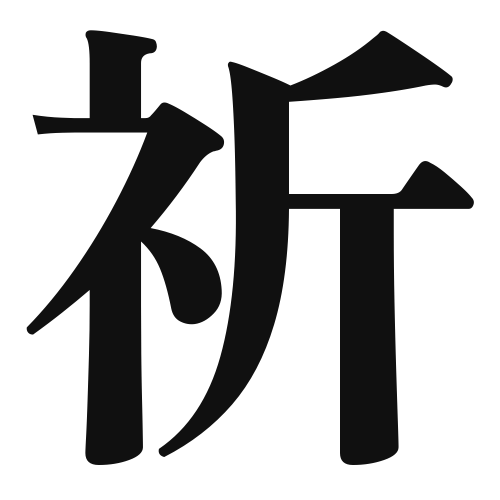1. Overview of Meaning
The kanji 祈 (pronounced “ki” or “inoru”) means “to pray” or “to wish.” It conveys the act of expressing hope or desire for something, often in a spiritual or religious context.
2. Formation and Radical
Formation of the Kanji: The kanji 祈 is a compound character (会意文字) that combines elements representing a ritual or offering with the concept of a prayer. It visually suggests the act of making a request to a higher power.
Radical: The radical for 祈 is 示 (shimesu), which relates to “to show” or “to indicate,” often associated with religious or spiritual contexts.
3. Examples of Usage
Common Words and Phrases:
- 祈り (いのり, inori) – prayer
- 祈願 (きがん, kigan) – wish or prayer for a specific outcome
Example Sentences in Daily Conversation:
- 「彼の健康を祈っています。」 (かれのけんこうをいのっています。) – “I am praying for his health.”
- 「試験に合格するように祈ります。」 (しけんにごうかくするようにいのります。) – “I pray that I will pass the exam.”
4. Synonyms and Antonyms
Similar Kanji:
- 願 (ねがい, negai) – wish or desire, which emphasizes the longing aspect rather than the act of praying.
Antonyms:
- 無 (む, mu) – meaning “nothing” or “absence,” which contrasts with the hopeful nature of prayer.
5. Cultural and Historical Background
Connection to Japanese Culture: The act of praying is deeply rooted in Japanese culture, often seen in Shinto and Buddhist practices. People visit shrines and temples to pray for good fortune, health, and success.
Proverbs and Idioms:
- 「祈るように願う」 (いのるようにねがう) – “to wish as if praying,” indicating a deep hope for something to come true.
